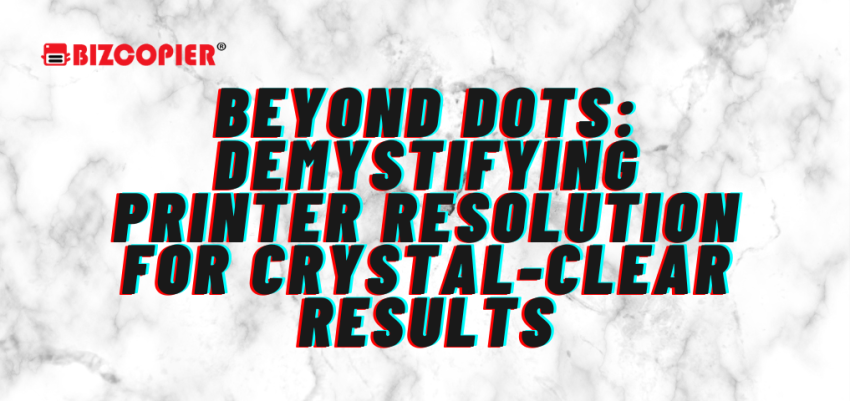Beyond Dots: Demystifying Printer Resolution for Crystal-Clear Results
Have you ever stared at a disappointing print, wondering where the crispness and vibrancy went? The culprit might be a misunderstanding of printer resolution. It’s more than just dots on a page; it’s the secret sauce for achieving professional-quality prints that captivate your audience.
Unveiling the Mystery: DPI Explained
Imagine a microscopic mosaic – that’s essentially what a printed image is. Each tiny tile is a dot of ink (inkjet) or toner (laser) meticulously placed by your printer. DPI, or Dots Per Inch, quantifies this density. The higher the DPI, the more dots crammed into each square inch, creating a finer and more detailed image. Think of it like comparing a low-resolution image on your phone to a high-definition picture on your TV – the difference lies in the level of detail.
The DPI Recipe for Success
Not all prints require the same level of detail. Here’s a roadmap to navigate the world of DPI:
300 DPI: The Everyday Champion This resolution is the workhorse for everyday documents like presentations, letters, or reports. It delivers crisp text and clear graphics, striking a perfect balance between quality and file size.
600 DPI and Beyond: Unveiling the Masterpiece For professional-looking photos and graphics where intricate details are paramount, consider venturing into the realm of 600 DPI or higher. This is ideal for high-impact marketing materials, portfolios, or cherished photo prints where capturing every nuance is crucial.
Beyond the Dots: A Multifaceted Approach
While DPI is the star player, achieving crystal-clear results requires a well-rehearsed team effort from other factors:
The Power of the Source: A high-resolution image file is like a master chef’s recipe – it provides the essential ingredients for a delectable outcome. Low-resolution images, regardless of DPI settings, will translate into blurry or pixelated prints.
Paper: Choosing the Perfect Canvas Just like an artist wouldn’t use a cardboard box for a masterpiece, paper selection matters. Opt for paper specifically designed for your printer type (inkjet or laser) and project (photo paper for photos, cardstock for presentations). The paper’s texture and weight can significantly impact the final print quality.
Printer Settings: Fine-Tuning the Performance Most printers offer a variety of print quality options. Explore these settings to discover the sweet spot between resolution, ink usage, and printing speed. Experimenting with “draft” and “high quality” modes can help you determine the best fit for your needs.
Striking the Balance: Efficiency Meets Quality
Remember, higher DPI settings often translate to increased ink consumption and slower printing times. For everyday tasks, a moderate DPI might suffice. The key lies in understanding your project requirements and finding the optimal balance between crystal-clear results and efficient printing.
By demystifying printer resolution and considering all the contributing factors, you can transform your printer from a simple machine into a tool for creating stunning visuals that leave a lasting impression. So, unleash your inner artist and start producing prints that truly shine!

